Circuit breakers , circuit breakers, plugs, fuses, circuit breakers. Despite the different nomenclature, these devices have one goal - to effectively protect electrical circuits against overloads and short circuits.
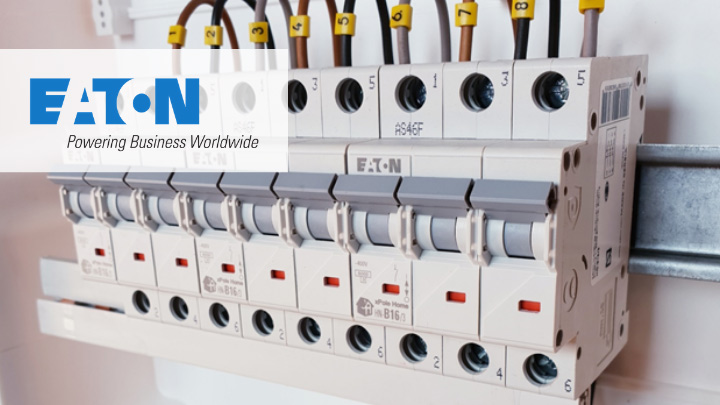
In this article you will read:
About how circuit breakers are categorized based on their characteristics, what products you will find on the market and how to choose a circuit breaker correctly.
What are you looking for?
Circuit breaker – time-current characteristics
The division of circuit breakers according to their characteristics is based on the categorization in terms of the speed of activation of the circuit breakers depending on the intensity of the current flowing through them. In turn, the occurrence of a short circuit in the circuit immediately triggers the circuit breaker, regardless of its time-current characteristics.
Time-current characteristics of miniature circuit breakers
| Characteristics of A | Characteristics B | C characteristics | D characteristics |
|---|---|---|---|
| Rare circuit breakers with time-current characteristics A are instantaneous circuit breakers. | The most commonly used circuit breakers , which are implemented primarily in residential solutions and various types of commercial premises with power up to several kW. An example is the HN-C25 switch. | This type of time-current switches is used primarily in industrial applications. | These are circuit breakers used only in typical industrial solutions. |
| They are used to protect electronic devices that are sensitive to fluctuations in electricity intensity. | They are used to protect socket circuits, lighting circuits and household appliances and electronics with low starting current. | They are used to protect devices with high starting currents - e.g. three-phase electric motors. | Used to protect power equipment with high starting currents - e.g. turbines or generators. |
| Overload trip current: 1.13-.145 | Overload trip current: 1.13-.145 | Overload trip current: 1.13-.145 | Overload trip current: 1.13-.145 |
| - | Short circuit trip current: 3-5 | Short circuit trip current: 5-10 | Short circuit trip current: 10-20 |
In addition to the standard division of miniature circuit breakers into circuit breakers with time-current characteristics A, B, C and D, there are also more specialized circuit breakers on the market with characteristics marked with the following symbols: E, K, S, Z or L.
Check out the Eaton brand zone in the Onninen wholesaler
Circuit breaker – product overview
 HN-B6/1N
HN-B6/1N
1+N-pole circuit breaker of the HN series from EATON with a rated short-circuit breaking capacity of 6 kA. The switch ensures high switching selectivity thanks to the low energy transmitted. It allows power supply to be connected from the bottom and top and can be mounted to connect up to 48 V DC per pole. The circuit breaker meets insulation coordination requirements with a contact spacing of 4 mm or more. It is equipped with a large number of additional accessories and a contact position indicator.
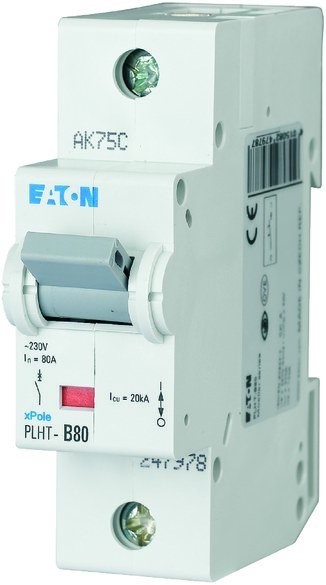 PLHT-B80
PLHT-B80
3-pole circuit breaker with D characteristic. The circuit breaker is designed for a rated current of 80 A and a rated short-circuit breaking capacity of 20 kA. The rated surge withstand voltage of the circuit breaker is 4 kV and the rated voltage is 400 V.
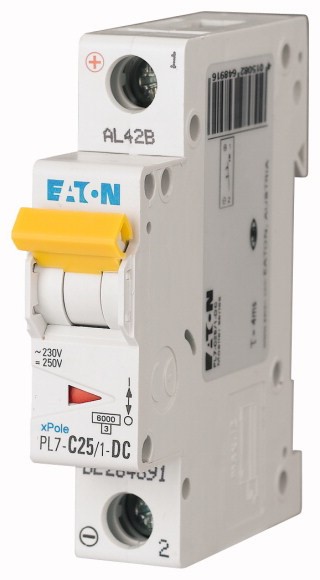 PL7-C25/1-DC
PL7-C25/1-DC
Single-pole circuit breaker with C characteristic and rated current of 25 A. The short-circuit strength of the circuit breaker is 10 kA. The circuit breaker meets insulation coordination requirements with a contact spacing of 4 mm or more. It is equipped with a large number of additional accessories and a contact position indicator.
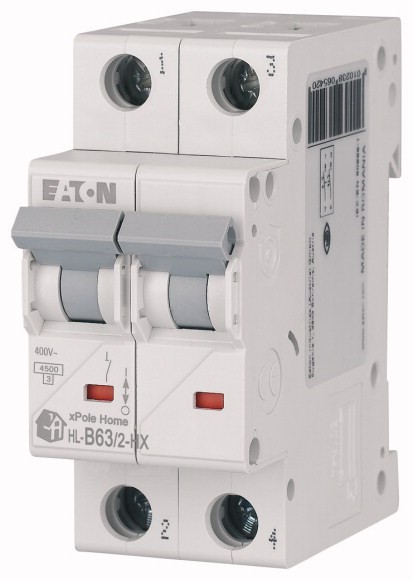 HN-B63/2
HN-B63/2
2-pole circuit breaker with B characteristic. The circuit breaker is designed for a rated current of 63 A and a rated short-circuit breaking capacity of 6 kA. The rated surge voltage of the circuit breaker is 230 V.
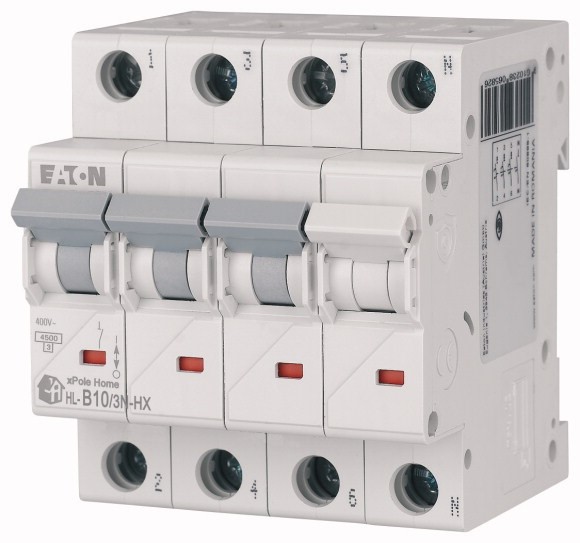 HN-B10/3N
HN-B10/3N
Four-pole circuit breaker with B characteristic and a rated current of 6 A. The circuit breaker's short-circuit strength is 6 kA. The circuit breaker meets insulation coordination requirements with a contact spacing of 4 mm or more. It is equipped with a large number of additional accessories and a contact position indicator.
Check circuit breakers at the Onninen wholesaler
There is a diverse range of circuit breakers available on the market. The circuit breakers operate with a rated voltage of up to 440 V and a current of up to 125 A. The breaking currents of circuit breakers B, C and D do not exceed 25 kA, and the most commonly used are protective devices with a rated current of up to 63 A and a breaking current of up to 10 kA. A standard example of a C-characteristic miniature circuit breaker for protecting circuits in residential or commercial buildings is the 3-pole EATON HN-C6/3 model with a rated short-circuit breaking capacity of 6 kA and a rated current of 6 A. Each miniature circuit breaker has a unified width - it is it is 17.7 mm in the case of a single module. In the upper and lower parts of the switches there are screw terminals to which the power and outgoing cables are connected, and in the front part of the switch there is a driving lever that switches on the voltage in the circuit protected by the device. The device parameters are marked on the front panel of the switches - its type, characteristics, voltage and rated current.
Manufacturers offer miniature circuit breakers with 1, 2, 3 and 4 poles, as well as with an optional neutral current path. Most modern switches are equipped with a structure that allows mounting to a DIN TH35 rail without the need to unscrew the entire group of electrical devices. The switches are equipped with two releases - a thermal one , which protects against overload, and an electromagnetic one , which protects against short circuit. All circuit breakers available on the market are manufactured in accordance with the following standards: DIN EN 60890-1, EN 60 898-1 and IEC 60 947-2.
Circuit breaker – circuit breaker selection
In accordance with the PN-HD 60364-4-43:2012 standard, miniature circuit breakers must be selected in a way that will ensure the activation of the electrical device when an electric current flows through them with an intensity higher than the long-term current carrying capacity of the Iz conductors. This requirement can be met if the inequality conditions are met - Ib ≤ In ≤ Iz ; I2 ≤ 1.45 Iz , where: Ib – design current (rated) of the receiver(s), where:
- Ib – design current (rated) of the receiver(s),
- Iz – long-term current carrying capacity of the cable,
- In – rated current or setting current of the protection device,
- I2 – activation current of the protection device.
The I2 current is defined as a multiple of the rated current In of the "eska" or fuse. I2 = kx In , where:
- k – multiplication factor of the current causing the circuit breaker to operate. The coefficient k is equal to:
- 1.6-2.1 for fuse links,
- 1.45 for circuit breakers with characteristics B, C and D.
Example of selecting a miniature circuit breaker
To better illustrate how to select a miniature circuit breaker, let's use a simple example. We want to protect the residential circuit with a 3x2.5 mm2 cross-section YDYp cable placed under the plaster against short circuits and overloads. The total power of the receivers installed in the circuit is 2 kW. How to choose a circuit breaker?
Step 1
We read the current carrying capacity of the YDYp 3x2.5 mm2 cable from the table presenting the current carrying capacity of the cables depending on the place and method of installation.
Step 2
We calculate the rated current of the receivers from their rated power. In our case it is approximately 8.6 A.
Step 3
We substitute the obtained values into the formula: 8.6 A ≤ In ≤ 18.5 A.
Therefore, the rated current is in the range of 10-16 A. We choose a higher value and enter it into the inequality: 8.6 A ≤ 16 A ≤ 18.5 A.
Step 4
We transform the inequality to obtain the value of the activation current of the protection device I2:
I2 ≤ 1.45 Is
I2 ≤ 1.45×18.5 -> I2 ≤ 26.825
I2 = k × In = 1.45x -> 1.45 x 16 = 23.2 A
23.2 ≤ 26.825
Based on the results obtained, it appears that an overcurrent switch with characteristic B is sufficient to protect a given circuit.